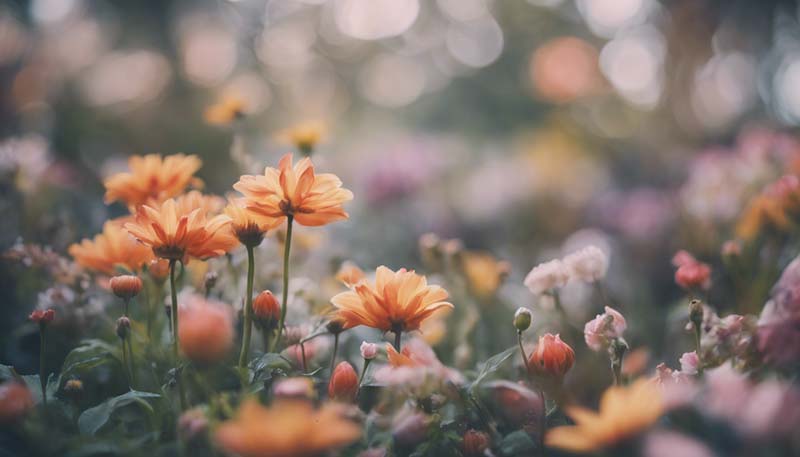Seasonal Flowers in Watercolor: A Photographer's Guide
Photography and Inspiration | 2024-07-04
Seasonal Flowers in Watercolor: A Photographer's Guide
Welcome to the enchanting world of watercolor painting, a medium that has captivated artists and photographers alike for centuries. This guide will delve into the art of capturing and recreating seasonal flowers in watercolor, offering tips for photographers looking to expand their creative horizons.
Introduction to Watercolor Painting
Watercolor is a painting method where pigment is bound to a water-soluble agent. It is distinguished by its luminosity and its ability to recreate the natural beauty of various subjects, including seasonal flowers. Unlike oil or acrylics, watercolors are transparent, which can create a unique and delicate effect when painting flowers.
Understanding Seasonal Flowers
Each season brings with it a variety of flowers that are unique to its climate and environment. Understanding the characteristics of these flowers can help you capture their essence in your watercolor paintings.
Spring Flowers
Spring is a time of renewal, and it's represented by flowers such as tulips, daffodils, and cherry blossoms. These flowers often have vibrant colors and a fresh, new quality that can be translated into watercolor with light, airy brush strokes.
Advertisement
Summer Flowers
Summer is synonymous with warmth and abundance, and its flowers reflect this with bright, bold hues and full blooms. Sunflowers, roses, and lilies are typical summer blooms that can be depicted in watercolor with rich, saturated colors.
Autumn Flowers
Autumn brings with it a palette of warm, earthy tones. Mums, marigolds, and asters are common autumn flowers that can be painted with a focus on their intricate details and the interplay of light and shadow.
Winter Flowers
Winter flowers, such as poinsettias, amaryllis, and paperwhites, are often associated with the holiday season and can bring a sense of warmth to an otherwise cold time of year. Their colors can be represented in watercolor with a more muted, yet still rich, palette.
Photography Tips for Capturing Flowers
Before you start painting, it's important to capture high-quality photographs of the flowers you want to paint. Here are some photography tips to keep in mind:
Lighting
Good lighting is crucial for capturing the delicate details of flowers. Natural light is often the best choice, so try to photograph your flowers near a window or outside during the golden hour for the most flattering light.
Composition
When composing your shot, consider the rule of thirds, where you divide your frame into nine equal parts and place the subject along these lines or at their intersections. This can create a more balanced and visually appealing image.
Macro Mode
Using a macro lens or your camera's macro mode can help you capture the intricate details of flowers that might be missed with a standard lens.
Background
Choose a simple background to keep the focus on the flowers. A blurred background, achieved by using a wide aperture, can help separate the subject from its surroundings.
Transitioning to Watercolor
Once you have your photographs, you can use them as references for your watercolor paintings. Here's how to transition from photography to watercolor:

Choose Your Paper
Watercolor paper is available in various textures and weights. For beginners, a medium-weight, cold-pressed paper with a fine texture is a good choice as it's easier to work with.
Gather Your Materials
You'll need watercolor paints, brushes (a variety of sizes), a palette for mixing colors, a water container, and a paper towel or cloth for cleaning brushes.
Start with a Sketch
Before you start painting, lightly sketch the outline of your flowers on the watercolor paper. This will serve as a guide when you begin applying colors.
Color Mixing
Study your reference photo and mix your watercolor paints to match the colors of the flowers. Remember that watercolors are translucent, so building up layers can add depth and richness to your painting.
Wet-on-Wet Technique
The wet-on-wet technique involves applying wet paint onto a wet surface, which can create a soft, fluid effect that is particularly suitable for painting flowers.
Details and Layering
Once the initial washes are dry, you can start adding details and layering your colors. Use smaller brushes for more intricate parts of the flowers and leaves.
Varieties of Flowers to Paint
Here are a few popular seasonal flowers and tips for painting them:
Tulips (Spring)
Tulips have a distinctive shape that's fun to capture in watercolor. Start with a base layer and gradually build up to the petals, allowing each layer to dry before adding the next.
Sunflowers (Summer)
Sunflowers are large and bold, making them a great subject for watercolor. Focus on the texture of the petals and the center of the flower to bring it to life.
Mums (Autumn)
Mums come in a variety of colors and shapes. Use a combination of wet-on-wet and dry brush techniques to capture their complexity.
Poinsettias (Winter)
Poinsettias are a classic winter flower with their vibrant red and green colors. Use a limited color palette to keep the painting from becoming too busy.
Conclusion
Painting seasonal flowers in watercolor is a rewarding way to combine the art of photography with the beauty of traditional painting. With practice, patience, and an eye for detail, you can create stunning watercolor paintings that capture the essence of each season's blooms.
Remember, the key to success in watercolor painting, as with photography, is observation and practice. Happy painting!
Comments